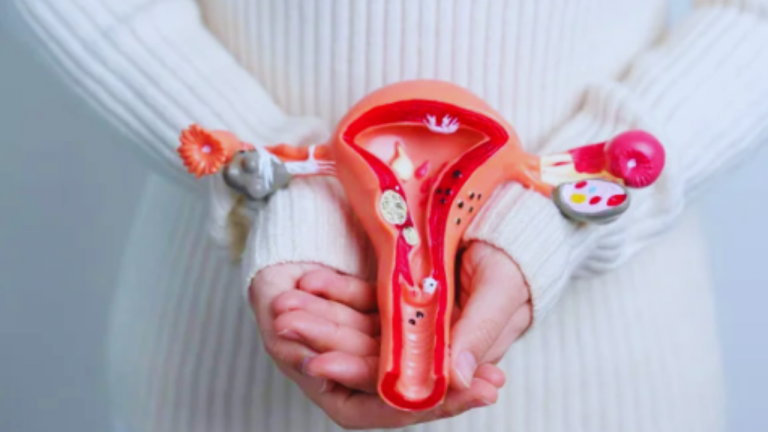Endometriosis

Endometriosis is a chronic and often painful medical condition that affects women of reproductive age. It occurs when tissue similar to the lining of the uterus (endometrium) grows outside the uterus, commonly on the ovaries, fallopian tubes, and the tissue lining the pelvis. In rare cases, it can spread to other areas of the body.
Key Features of Endometriosis:
Abnormal Tissue Growth: With each menstrual cycle, the endometrial tissue inside the uterus thickens, breaks down, and is shed as menstrual blood if pregnancy does not occur. In women with endometriosis, the misplaced tissue outside the uterus responds to hormonal changes in a similar way, but the blood and tissue have no way to exit the body. This can lead to the formation of painful lesions, adhesions, and scar tissue.
Pelvic Pain: The most common symptom of endometriosis is pelvic pain. The pain can vary in intensity and may be experienced during menstruation (dysmenorrhea), sexual intercourse (dyspareunia), and throughout the menstrual cycle.
Painful Menstruation: Women with endometriosis often experience severe menstrual cramps that are not relieved by over-the-counter pain medications.
Painful Bowel Movements and Urination: Endometrial tissue outside the uterus can affect nearby structures, leading to painful bowel movements or urination, especially during menstruation.
Infertility: Endometriosis can interfere with fertility by causing adhesions and scar tissue that may block the fallopian tubes or affect the ovaries’ function.
Diagnosis and Treatment:
Endometriosis can be challenging to diagnose, as its symptoms can overlap with other conditions. Diagnosis often involves a combination of the patient’s medical history, physical examination, imaging tests (such as ultrasound or MRI), and, in some cases, laparoscopy. Laparoscopy is a minimally invasive surgical procedure in which a thin tube with a camera is inserted into the abdomen to visualize and diagnose endometriosis.
Treatment for endometriosis aims to relieve symptoms, improve fertility, and manage the condition. Treatment options may include:
Pain Medications: Over-the-counter pain relievers and nonsteroidal anti-inflammatory drugs (NSAIDs) can help manage pain and inflammation.
Hormonal Therapies: Hormonal treatments, such as birth control pills, hormonal intrauterine devices (IUDs), or gonadotropin-releasing hormone (GnRH) agonists, can help suppress the menstrual cycle, reducing the growth and shedding of endometrial tissue.
Surgery: Laparoscopic surgery can be performed to remove endometrial lesions, scar tissue, and adhesions. In cases of severe endometriosis or fertility issues, more extensive surgery, such as a hysterectomy (removal of the uterus), may be considered.
Fertility Treatments: For women trying to conceive, assisted reproductive technologies, such as in vitro fertilization (IVF), may be recommended.
Endometriosis is a chronic condition, and its management often requires a multidisciplinary approach involving gynecologists, pain specialists, and fertility experts. Early diagnosis and proper treatment can help improve the quality of life for women with endometriosis and manage its impact on fertility and overall health.



